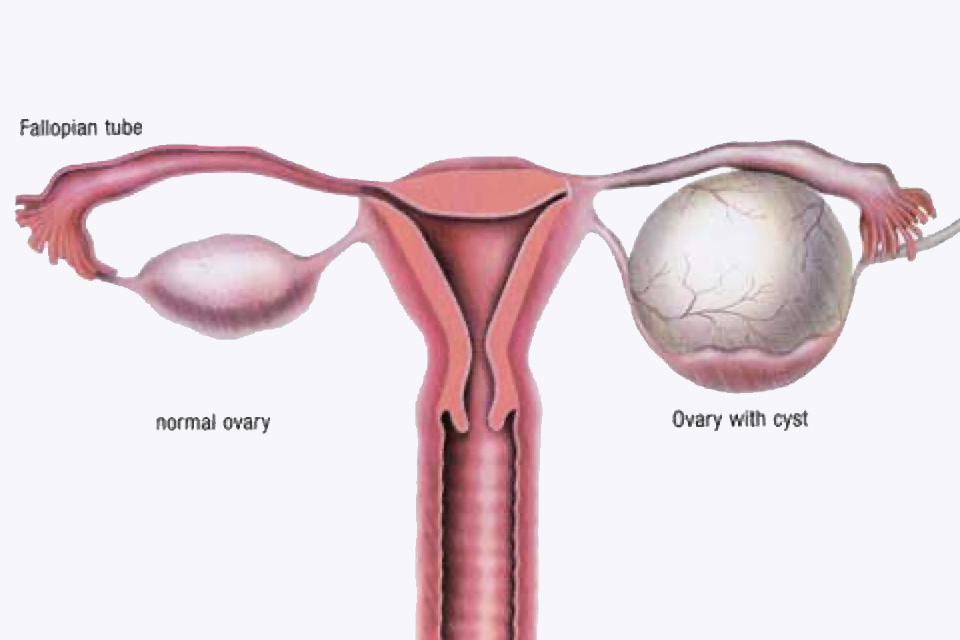Ovarian Cysts
An ovarian cyst is a fluid-filled sac that develops inside an ovary. Most ovarian cysts are noncancerous (benign), cause no symptoms and will often go away without treatment. Some (less than 5%), cause problems such as pain and irregular bleeding.
Ovarian cysts can vary in size, from less than the size of a pea to the size of a large melon (occasionally even larger). They are very common and can develop at any age. They occur more often in younger women who have not reached menopause but can also occur after the menopause.

Types of ovarian cysts
There are 2 main types of ovarian cysts:-
Functional cysts
- These are the most common type.
- They are harmless cysts that form during the menstrual cycle or periods.
- They produce hormones, so periods can be delayed and irregular.
- These cysts often have no symptoms or mild symptoms and go away in 1 to 3 months.
- They only require removal if they are causing severe pain, or do not go away.
Pathological cysts
- These are tumours in the ovaries that are either benign (harmless) or malignant (cancerous). These cysts continue to grow until they are removed

Symptoms of ovarian cysts
Most ovarian cysts don’t cause symptoms, but in a few women they may cause symptoms such as:
- Pain in the tummy area (abdomen or pelvis), especially during your period or during intercourse.
- Irregular periods that may become lighter or heavier than usual.
- Problems with urination or bowel movements.
- Weight gain.
Sometimes, ovarian cysts may rupture, twist, bleed or become infected, all of which are likely to cause severe pain and may cause nausea and vomiting. Rupture of a cyst can occur after exercise, sexual intercourse, trauma or even a pelvic examination.
Diagnosing ovarian cysts
- Ovarian cysts are usually diagnosed by ultrasound scan, sometimes further investigations such as an MRI or CT scan are also required
- If you are past the menopause, Mr Broome may recommend a test to measure the amount of cancer-antigen 125 (CA-125) in your blood. The amount of CA-125 is higher with ovarian cancer. In premenopausal women, many other illnesses or diseases besides cancer can cause higher levels of CA-125.
Treating ovarian cysts
Treatment of ovarian cysts depends on:-
- age
- type and size of the cyst
- symptoms
No treatment (watchful waiting) is usually an option, regardless of your age, if you have no symptoms and an ultrasound shows you have a small, fluid-filled simple cyst. However, you will be monitored for any changes in symptoms and changes in the size of the cyst.
An operation may be performed to remove the cyst if it is large, increasing in size, causes pain, or it does not go away within a few months. This is called an ovarian cystectomy and is usually carried out by keyhole surgery.

